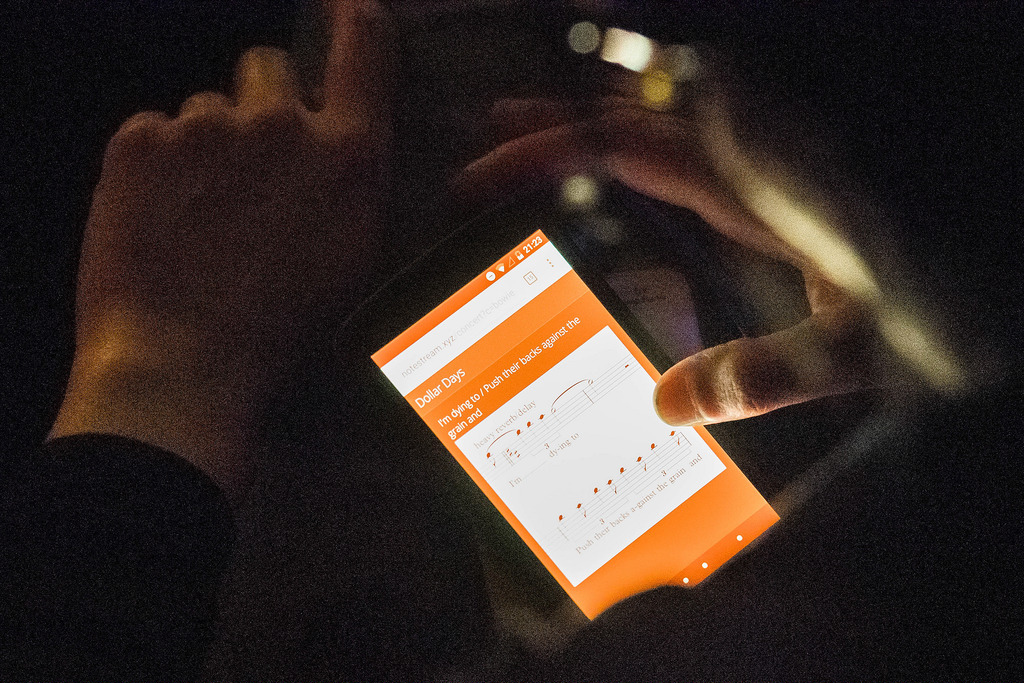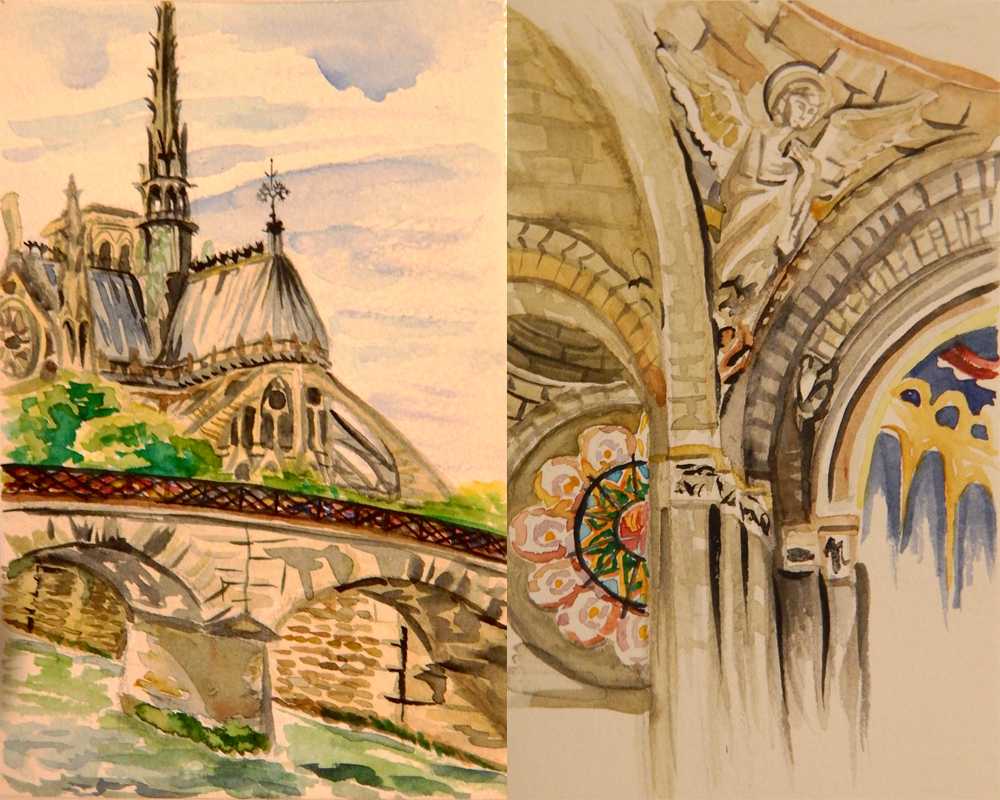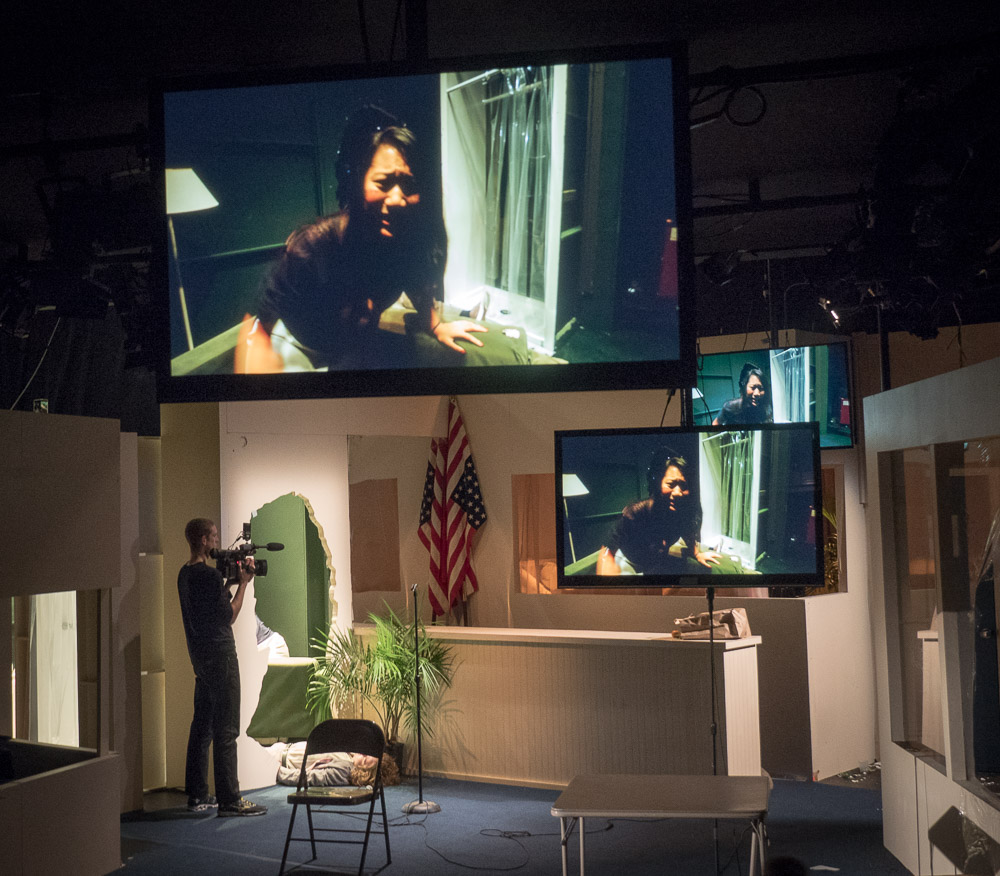There is common misconception that all MIT students prioritize psets over practicing piano, performing Shakespeare, drawing, painting, dancing or designing lighting cues. The 2017 recipients of the Wiesner Student Art Awards—Jacob Gunter, Nathan Gutierrez, Rachel Osmundsen and Hallie Voulgaris—counter this stereotype. Each has integrated the arts into the undergraduate experience at MIT in a different way.
The Laya and Jerome B. Wiesner Student Art Awards are presented annually to the most exemplary undergraduate and graduate students for outstanding achievement in and contributions to the arts at MIT. Established by the Council for the Arts at MIT in 1979, these awards honor the late President Emeritus Jerome Wiesner and Mrs. Wiesner for their commitment to the arts at MIT. An endowment fund provides a $2,000 honorarium to each recipient. Nominated by members of the faculty and staff, this year’s recipients, all seniors, are not only supremely gifted in the visual or performing arts, but they also embody a spirit of collaboration and creative drive.
2017 Recipients (in alphabetical order)
Jacob Gunter ’17
For the past five years, Jake Gunter has been a fixture behind light boards, on ladders and at design meetings, contributing his expertise in lighting and sound to live performances across the Institute. A graduating senior in the School of Humanities, Arts, and Social Sciences and the School of Engineering, Gunter was the “go-to” problem-solver on countless productions for Music and Theater Arts. Director of Design Sara Brown notes that, “When the sound system in Little Kresge Theater is on the blink, or we need assistance resetting the lighting in a rehearsal space, Jake is the first person we call.” She says that he sought to make light “an active participant in the storytelling,” spending many hours creating memorable effects for Small Infinities, a play that revolved around Isaac Newton’s discoveries about light, for his thesis project in Theater Arts.
Gunter became interested in design for live performance in high school, where he also played in the band and the orchestra. “When I came to MIT, I knew that I wanted to continue doing art and theater and music. But I wouldn’t have predicted the extent to which I got involved in the arts at MIT. There’s certainly a lot to do in terms of the artistic community at MIT, and I don’t think I knew that coming in. So I was very pleasantly surprised at both the amount of opportunities to practice performance art, of all sorts, as well as the great passion of the people at MIT who participate in those,” he says. He designed lighting for several MIT music ensembles’ performances for four years before joining the Festival Jazz Ensemble on percussion this year.
“Computer science might be the field most ripe for applications in artistic fields. Everything from theater, to music, to visual art, to videography or photography either is, has been, or will soon be computerized,” he says, explaining why the arts are popular among Course 6 students. He adds, “It’s possible, in a lot of ways that you might not expect immediately, to merge your artistic interests with your technological, engineering, or science interests…..I find a lot of applications of my computer science education in the field of lighting, because now most lighting and sound systems in theaters are controlled by computer systems. And, of course, someone has to write that software. Having that background in software design from my coursework at MIT gives me a unique perspective on the way that the control software is designed, which I think can sometimes help me work a bit more efficiently than I would otherwise be able to do. Somewhere years down the line, one of my dream jobs would be to actually work with a company that makes that sort of software.”
Nathan Gutierrez ’17
Nathan Gutierrez, a Course 6.2 major in Electrical Engineering and Computer Science with a concentration in Music, combines high caliber engineering skills and well-developed artistic sensibilities in his work. Nathan was a UROP in Eran Egozy’s newly formed MIT Music Technology Lab. Egozy says, “[Nathan] combines his engineering prowess with considerate and intentional aesthetic design principles. He can imagine beauty in his head, and he knows how to build it.”
Gutierrez recalls how when he was in high school, his mother used to say, “stop doing homework, let’s play Rock Band!” He played so much Rock Band—one of the well known games created by Egozy’s company, Harmonix, along with Guitar Hero—that he was particularly thrilled to join Egozy’s lab. “When I got to MIT, the music technology department didn’t exist …. So I joined the Shakespeare Ensemble, which is a student group where I composed music for them…, and I also did sound design. And so I did that on my own for two years. Then I found out that Eran was having this class, Interactive Music Systems.”
With Egozy, Gutierrez developed ConcertCue (formerly NoteStream) – a live program note web-app that was featured in two recent MIT concerts and will be used in an upcoming concert for The Boston Symphony Orchestra. ConcertCue delivers multimedia content to audience members’ cell phones in real time during a live performance. Michael Cuthbert says, “The impact of his work is quite likely to be felt far beyond MIT; it’s the first artistic computer application I have seen worthy of an Institute-level arts award.”
Gutierrez’s ability to build and operate such a system stems also from his own musical skills. He plays bass and electric keyboards, composes electronic music and studies music technology, theory and composition. He says the experience in Egozy’s lab “has prepared me for working a real job with my Course 6 knowledge.” He has this advice for other students in the arts: “Reach out, like I reached out to Eran. I mean, we have a great arts program here, in all the arts. Keep up with your art, even though you may feel like you can’t do it in your major. You should keep it up and try reaching out to faculty who would possibly be interested. You just can’t give up. Right? Don’t give up your passion, ever. Even if it feels pointless and worthless, because it’s not worthless. And it’s not pointless.”
Rachel Osmundsen ’17
Rachel Osmundsen, a graduating senior in Materials Science and Engineering, received a Wiesner Award for her outstanding contributions to MIT student arts groups. While being immersed in her studies in Course 3, Osmundsen has participated in the arts community in a variety of capacities, including as an Arts Scholar, a First-Year Arts Seminar Advising Program Associate Advisor, and a painter. She also served as a volunteer with such initiatives as the 2016 Bucentaur, the floating barge for the flotilla on the Charles River created for the anniversary of MIT’s move from Boston to Cambridge.
Osmundsen remembers her orientation at MIT, when she retreated to her room to draw the view from her window: “I didn’t know what to do with myself because I didn’t know anyone, so I sat in my room and painted. I used to live in Maseeh, so I drew the view of the clock tower and the river.” She maintained her sketchbook and painting practice throughout her time at MIT, taking her watercolors on her MISTI internship in France and attending informal life drawing sessions in the dorms. She says, “Part of what drew me to material science is that it can be very visual. So there is a lot of looking at crystal structure, and the growth of different phases, and different microstructures…. I was drawn to the macro and micro visual appeal of the images we see in the lab.”
Osmundsen distinguished herself in her three years as an Arts Scholar by enthusiastically and actively participating in the group’s trips to exhibitions and performances each year. In her role as FASAP Associate Advisor, she organized arts-focused get-togethers and study groups, explained the arts at MIT to new students, and went beyond her duties by creating care-packages for the first-year students. She advises students interested in the arts to seek like-minded people, and says, “Art Scholars is a great place to start. Or try to find other groups—official school groups or not—that do whatever art is you like to do, if you like to paint or you like to do slam poetry, or whatever. Know that you don’t have to give up doing art if you go to a technical school.”
Hallie Voulgaris ’17
Hallie Voulgaris, a music and math major, brought the rigor of a fierce scholar and fine practitioner to all her work in Music and Theater Arts. A violinist, composer and lighting designer, Hallie contributed to all areas of the performing arts at MIT.
Voulgaris has been a Burchard Scholar and a stalwart member of the MIT Symphony Orchestra’s violin section. Director, Wind and Jazz Ensembles, and Lecturer in Music
Fred Harris says that her artful lighting designs for MIT Festival Jazz Ensemble and MIT Wind Ensemble concerts are one example of how she “joyously contributes to the whole.” She has worked with a number of theater ensembles, and devoted countless hours to the fall production of The Resistable Rise of Arturo Ui, as the assistant master electrician.
Thorough, diligent and devoted, Voulgaris consistently impressed the Music and Theater Arts faculty. Emily Richmond Pollock, Associate Professor in Music, describes her final paper on Wozzeck for the Opera class as “a combination of top-notch analytical work and keen insights into the play of musical/theatrical meaning….” And Charles Shadle, Senior Lecturer in Music, says, “her brisk intelligence, deep interest in music and superior writing skills” were only overshadowed by “the music she composed.” She possesses a gift for “extrapolating historical musical concepts and using them in a manner both imaginative and beautiful.”
Voulgaris laughs at herself for being “such a nerd” for loving opera or talking about medieval and renaissance music class: “I love that stuff. It’s so interesting. But it means that I’m just talking about it all the time, and I’m sure my friends get sick of it… because most of the people I live with are not performing arts people. So they’re just like, what are you even talking about? I’m sure I may be annoying at parties.” All music-driven theater appeals to her, and she is particularly interested in unconventional stagings and newly composed operas. She plans to continue composing and performing music. She says, “Sometime during my time at MIT I had this shift where I realized that, no, I don’t think I’m going to be content just doing this as a hobby, and having some sort of tech day job. That’s not going to make me happy.”




